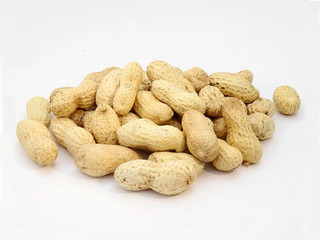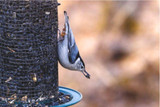5 things to do to rewild your garden in time for spring
Rewild your garden in spring
If you’ve got a green thumb and you’re itching to get your garden in tip-top shape, there are a number of ways that you can rewild your garden in time for spring. Whether you want to attract wildlife or beautify your lawn, with our top tips you’ll achieve the garden of your dreams in no time and with minimal effort. Read on to learn how to get involved in rewilding and get a garden your neighbours will be envious of!What is rewilding?
Regardless of whether you’ve got a large open garden space or a modest one, you can always get involved in rewilding. Essentially, it involves restoring your land or garden to its natural state to encourage more wildlife and nature to reside there. If you’re new to the concept it may seem like a strange idea, however, it will help you to protect natural ecosystems and attract wildlife species to your garden.Rewilding pros and cons
The aim of rewilding is to improve natural habitats and ecosystems and restore them to the same state they were in before humans intervened. One of the main benefits of doing this is to conserve species and recreate lost habitats. Every species on earth plays an individualy important role, so it’s important to do our bit wherever possible to support the survival of the earth’s wonderful wildlife species! However, one of the cons of rewilding is that it doesn’t necessarily involve letting your garden grow wild and free. Rewilding requires careful planning and management in order to make sure it’s effective, so it can be quite time-consuming to keep up with. Fortunately, we’re here to make this a whole lot easier. Read our 5 rewilding examples below to learn how to manage your garden in time for spring.1. Create a ‘wild area’
You can do this by leaving piles of leaves, old bits of wood, twigs and grass in a sheltered corner of your garden. This will create a cosy home for animals such as hedgehogs to hibernate in, and it will also provide a place for slugs and beetles to thrive.2. Don’t be too tidy
If you’re very particular with your garden design, this may be difficult to get on board with at first, however, once your local wildlife has moved in you won’t want to look back! You can trim hedges, branches and grass a certain amount, but allowing a bit of wildness here and there will create a haven for little critters.3. Mix and match your plants
Mix and match the plants in your garden to create a wildlife and bird friendly garden design. Not only is this attractive to look at, you’ll have better success at attracting bees and other insects with a wider range of plants and flowers.4. Avoid harmful pesticides
Ditch the harmful, chemical pesticides in favour of more natural alternatives to create a more wildlife-friendly environment in your own back garden. You can buy organic, natural deterrents or alternatively you can make them yourself with natural ingredients.5. Don’t ditch the weeds
Weeds are often painted in a bad light as the ‘pariahs’ of garden plants, however did you know that they can play an important part in rewilding! Plants such as stinging nettles provide homes for moths and butterflies, so leave your weeds be to see a wider array of beautiful insects. Once you follow these simple steps, you can attract wild birds to your garden as well as a variety new wildlife. Don’t forget to keep them coming back for more with our sumptuous suet products and nutritious niger seed, and of course, remember to log any sightings in our BirdSpotter app!Explore Popular Articles
-
Top 11 Yellow Birds in Britain and the UK to Attract in Your Garden
15th Dec 2025Yellow birds bring a splash of colour and cheer to any garden. Observing these birds can be both rel
-
Should You Feed Birds Every Day? A Complete Guide on Feeding Birds
15th Dec 2025At Kennedy Wild Bird Food, we believe that understanding how to care for garden birds is as importan
-
How Sunflower Seeds Can Improve Your Bird's Health
14th Jun 2024Birds are quite attracted towards sunflower seeds, but have you ever wondered about sunflower seeds'














